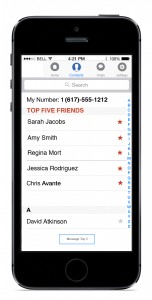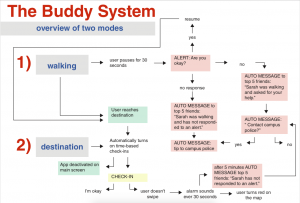SaferCampus is back this semester, with the goal of finally producing and unveiling our app.
Last semester, our team worked to develop the interface of mobile app that can educate Harvard students about bystander intervention and encourage active bystander behavior. The plan we came up with involves allowing students to check in with a selected group of friends while they are out (at parties or walking around campus), and release calls for help during dire circumstances. Using an incentive system, the app (tentatively called “Bonobo”) would encourage students to practice active bystander behavior, thus putting the responsibility not just on the survivor of harassment, but on the entire community.
Looking forward, our goal is to further streamline the visualization of our app, so that we can effectively use the 10 hours of developer time that Berkman has allotted us this semester. To help us in this project, we are looking to work with a professor in computer science to advise us on feasibility of aspects of our project.
Additionally, our group is currently applying for the a grant from the president’s office in order to fund extra developer time during this semester.




